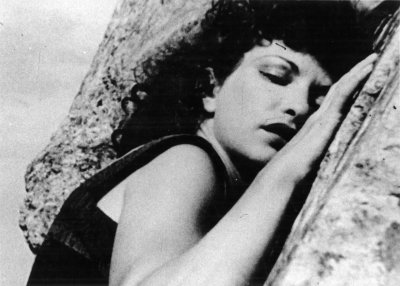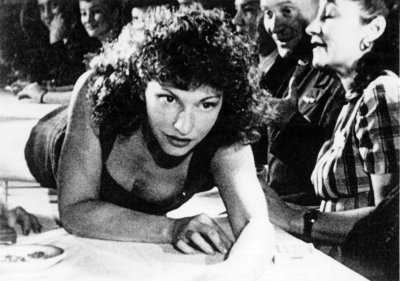

1944, USA, 16 mm, b/w, silent, 14 min.
At Land is another of Maya Deren’s dream-like films. The message which it transmits to and its main subject rests on the idea of the mutability of a personality. Maya said once that this film was made to show people the struggle to maintain the personal identity. The whole film has only 14 minutes, in which a whole life is subjectively described. It was made in the year of 1944, and Deren was the one who wrote, directed and played the featured role in it, just like in her first movie Meshes of the Afternoon.
Maya is laying on the sand, and the ocean’s waves are coming and going like if she had been spelled from it. This symbolic birth from the sea was particularly chosen to make us think on the individual particularity, different from all the others. Maya begins to run, to explore the surrounding world. There is an elusive critic of the society at that time, which was not curious to know if there was any truth besides television or Hollywood.
At land Maya goes on a strange journey encountering other people and other versions of herself. The composer John Cage and the poet and film critic Parker Tyler were involved in making the film, and appear in some sequences, shooted at Amagansett, Long Island. At the end, she chooses to go back to the sea after her incessant odyssey at land to find an identity.
In At Land, a woman (Deren) emerges from the ocean and infiltrates various social situations, including a dinner party and a chess game on the beach. Her emergence and ensuing sojourns among jarring geographies highlight the film’s key device - editing. The film casts the protagonist adrift in hostile social and natural environments but provides the character with the means to survive the inhospitable worlds she navigates - a multiplication of herself that produces sameness and difference.
At Land is Deren’s least personal yet most individualistic film - ignored by many characters in the film, the protagonist is recognised and affirmed only by increasingly abstract, de-personalised, and spatially displaced versions of herself.
Maria Pramaggiore
